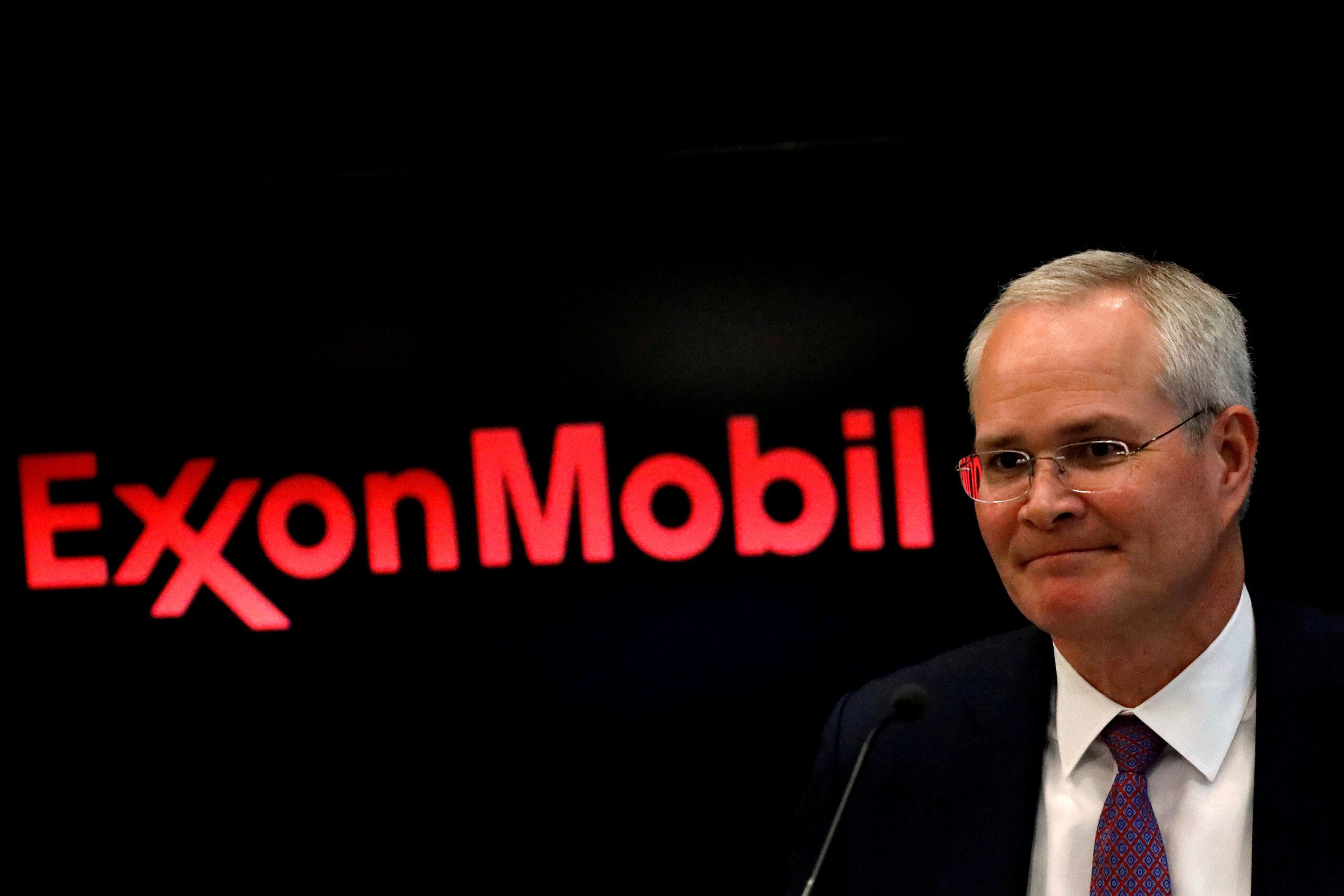
- December 27, 2025 10:32 pm
- California

Darren W. Woods
CEO & Chairman
Talking to Thomas Hundertmark, a senior partner in McKinsey’s Houston office, Darren Woods is chairman and CEO of ExxonMobil made some crucial points and also gave some insights on what the conglomerate was doing in order to save the climate.
When Darren Woods took the reigns of ExxonMobil six years ago, no one could have anticipated that the Kansas resident would soon face what Texas oil patch vets call “a whole pile of trouble.” Three years later, the oil market collapsed during the COVID-19 pandemic, which dealt the 140-year-old oil organization its first annual upset in four decades. Shares tumbled, and the company was dismissed from a perch in the Dow Jones Industrial Average index that it had inhabited for nearly 100 years. ExxonMobil leaned in as competitors stepped back from fossil-fuel investments, and shareholders mustered against its finances and core oil and gas extraction procedure.
ExxonMobil rebounded as the war in Ukraine hardened oil and gas prices and refocused the debate on attacking global warming, including energy security. Armed with record profits last year, robust cash flow, and a $9 billion multiyear rebuilding that Woods had introduced to lower costs and apply technology more instantly to its core businesses, the company is primed for growth and acquisition in its traditional organizations and what it sees as low-carbon answers, such as hydrogen, carbon capture and storage, and lower-emission energies.
When asked how customers and businesses should think about the global energy system within community and the challenges society faces, Darren Woods says, “I’d say there are three key factors. The first is size. I think people don’t fully appreciate today’s energy system’s volume. There are about a hundred million barrels of oil daily on the oil need side. If you convert gas to equivalent barrels daily, it is 70 million barrels, so 170 million barrels a day of requirement. It is hard to get your mind around just how big that is. It’s an immense system we’re looking to transform today, and I don’t think people fully appreciate how big a job will be.
The second is the important role [the energy system] plays in supporting economic development and people’s living standards. There are still almost a billion people residing in energy poverty. Third, oil and gas play a vital role in the energy system because of their characteristics: they are energy-dense, transportable, and extremely available. That shows a level of convenience, dependability, and affordability that is hard to replace.
So, it is problematic when you think about an energy transition and replacing the size, utility, condition, and then effectiveness of today’s energy system with something unique. Given the scope and the complexity, it will be a transition that has to be addressed thoughtfully and carefully over many decades. For every barrel or ton of natural gas we create, we have got to find a new replacement to preserve the supply level and, at the same time, make the acquisitions to transition. Striking a balance between continuing to do what the world requires with today’s energy system while working to conceive the technologies and drive down the price of transitioning to a lower-emissions energy system is critical.”
What is the accurate problem statement to address climate change and energy shield?
Darren Woods explains, “One of the issues in solving the challenges of climate change and energy metamorphosis is the problem statement. The emissions and their impact on climate are a price associated with today’s energy system. That’s real, that’s true, and we need to deal with that cost. However, that view overlooks the benefits it brings to society. And we’ve seen, over the last various years, that when those benefits disappear—think of the Russian attack of Ukraine, when Europe lost natural gas—those economies and governments quickly convert back to burning coal for power epoch.
Some define the problem as “We need to get rid of oil and gas.” The problem must be defined as, “We require to address the emissions related with the combustion of oil and gas.” You will often stop burning oil and gas and have an alternative. That’s where wind and solar energy will recreate a position, and electric vehicles will play a part. Those are required solutions, but they’re not enough. So I think the issue should be: decrease the emissions, find the technology to do that and find inexpensive technology to implement solutions effectively. We haven’t understood or given enough time as a society working on that piece of the equation.”
What’s the conversion issue?
Darren Woods elucidates, “The big challenge with transforming today’s system to a new system is the cost. You will require technology breakthroughs to get the price down with the recourses available today. The solutions we have today are too costly and may have issues that bring an additional or different price to the equation. So, technological breakthroughs will be critical to decreasing costs and ensuring that alternatives are broadly obtainable, reliably available, and affordable. That’s number one.
Number two is we have got to develop an economy that spends for carbon reduction. Eventually, there must be a demand where consumers and companies are willing to pay some compensation to reduce carbon. Because today, there’s no incentive to explain the investments that private companies in just about every industry will have to make. With time, and hopefully, as technology prices come down, there will need to be what I refer to as a “carbon market,” where society bears for carbon reductions, which will then incentivize the investments needed to reduce that carbon. The third critical element will be policy. Governments can play a role in catalyzing private industries today to start those investments, start down the learning curve, and drive technology investments. That policy requires to be transparent, durable, and temporary. Because the world’s governments cannot afford to pay for this without technological development and carbon market development. But it’s critical to get things started.”
Where does ExxonMobil fit in that equation?
Darren Woods adds, “Various people are looking at going into new and different businesses in answer to the challenges of climate change and the transformation. Our perspective was that we bring unique skills and capabilities to the world we’ve grown over the last 140 years. And it’s generally focused on changing molecules: hydrogen and carbon molecules. And what are our strong sets? What technology areas do we have expertise in that will be required? We’re focused on carbon capture and storage, hydrogen manufacturing, and biofuels, which will be required solutions and part of the equation in the future. Our job in that space is to leverage our capabilities, continue evolving technology, drive down those costs, and build up those businesses at develop.
The other strong point is that we start with brand-new value chains and businesses in countries worldwide. We can build businesses from scratch with governments, communities, and stakeholders. Frankly, we need to do the same in the carbon reduction business. So, that skill set we have developed in our traditional businesses offer itself to application in low-carbon companies.
Think carbon capture and storage. It needs storing CO2 underground. Our subsurface skill set—our capability to model reservoirs, inject CO2 underground, and drill the wells—is applicable in our traditional businesses and has a vital role in carbon capture and storage or creating projects at scale. The size of the investments required and the technology in those investments are all part of our initiative. When you think about our traditional businesses in terms of the molecules we are managing and the transition and the business associated there, they both include hydrogen and carbon molecules.”
Low Carbon Solutions business
Darren Woods states, “We have these core capabilities in areas where the challenge is getting the cost down. So we are doing a lot of work in the [technology] space and, frankly, creating a brand-new business. We have the world’s most significant commercial contracts to manage customer CO2 emissions, transport them, and sequester them safely.
That’s an essential business for which we will grow. As a company, we have captured more anthropogenic CO2 than any other company in the world. We’ve got a lot of experience in this space. We’ve used it in a different application. We’re now using it to store CO2, and we’ve got to find ways to reduce the cost. I think biofuels will be another critical area in which we can contribute. We’ve got in-ground facilities that we can convert to use in the biofuels space, which will also be a vital part of the equation. And hydrogen is the third area that will be critical to a lower-emissions future.
We’ve got a lot of experience in hydrogen. We use it in almost all our facilities, so we know what it takes to run a hydrogen business. We’ve got a project to build the largest hydrogen plant in the world. We’ve got the aperture wide open around what the opportunity could be. The only criterion we’re using is that it fits well with our core capabilities so we can drive advantage and deliver returns above the industry average. If we can’t do that, our view is we shouldn’t be in those businesses.
Other than that, we’re open-minded. If we can find a way to reduce the cost of making carbon fiber, we could find ourselves in the building materials business. We recently bought a small company with a proprietary technology to transform a derivative of gasoline molecules into products that replace steel. So today, we are making a product that can replace rebar in construction.”
How much leverage does a company like ExxonMobil have to influence the direction of change?
Darren Woods says, “We can contribute expertise and our understanding of today’s energy system to the discussion of how to successfully transition. The time it will take to build these solution sets will be pretty long, and we have an advantage in shifting resources to participate. We can ensure that policies effectively bring solutions at the lowest cost possible to society because transitioning an energy system will be expensive. So I do think we can influence the direction.
The role leaders have—and indeed a role I feel like I have—is to bring an objective, clear-eyed perspective on the challenges and to talk straight. There’s undoubtedly a role for aspirations. However, that must be built on a solid understanding of what must happen to effect this change and this transition. The role leaders can have in every sector is to make the effort and the investment to truly understand where we are today, where we need to be, and what that transition and cost will be. This will require society to change and pay a fee for changing out an industrial, power-generation, and mobility sector developed over the last 140 years. You need to do the math and then explain the math. And there’s not enough of that happening today.
Our development process has been critical, which takes people through the jobs that build core capabilities and core strengths that apply to this bigger job. Many managers and leaders put me through the grind, challenged me, and helped me stand up to adversity and be clearheaded in thinking about things.
I can still remember being coached in my first supervisory job to understand that I had a role to play in finding the next CEO because, though we couldn’t know who it would be, [the selection process] would start by bringing folks in and developing them through their careers. As you challenged people throughout their jobs, what you found were their limits and constraints, which set their ultimate potential. For some people, you’d keep looking for those limits and restrictions, and you couldn’t find them. So you’d take them to the next job and the next job. That process is excellent for eventually stepping into this job because when you do, that mindset—that muscle—is there. I think I was as best prepared as I could for this job. But I wouldn’t tell you I was fully prepared.”

"We can contribute expertise and our understanding of today’s energy system to the discussion of how to successfully transition. The time it will take to build these solution sets will be pretty long, and we have an advantage in shifting resources to participate"